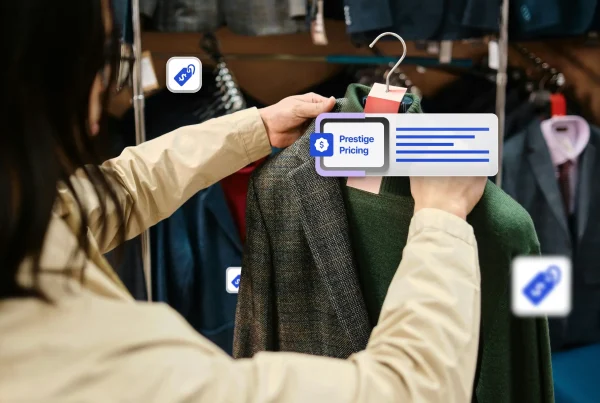Thanksgiving is around the corner and the headlines out of Wall Street are not pretty. Inflation is now consistently hovering around 8.5-9%, interest rates are rising by 75 bps and one can realistically expect this difficult environment to continue and the challenges to flow from Wall Street to Main Street.
Pricing, be it for retailers or grocers, is incredibly difficult during normal times, and becomes all the more so given the current circumstances, requiring a more thoughtful and nuanced approach. Business-as-usual is the last strategy merchants should rely on. The good news is that there are time-tested strategies that pricing teams can focus on. Before we get to those, let us look at some things that definitely should not be done while creating pricing strategies:
Creating pricing strategies that rely on last year’s numbers
Needless to say, with COVID-19, this strategy has been at least partially unseated. Nonetheless, it is still being used by planners, albeit with FY 2019 as base year. We tend to fall back on our habits and this is a not-so-great one. Strategies such as looking into historicals or relying on last week’s rate of sale for example, have worked directionally in normal times, but are going to fall short as consumers look for deals in the current milieu. And by not optimizing pricing strategies, planners leave significant dollars on the table.
The ‘new normal’ and the ensuing assumptions
We have established that relying on historical numbers is not good enough to make pricing decisions anymore. The other end of this spectrum is guesswork arising from either exhaustion or biases.
✅ ‘Let’s go with a 30% discount like last year.’ –> Classic example of decision fatigue!
✅‘Shipping costs have increased by 12%, let’s increase correspondingly.’ –> Classic example of accounting for just 1 variable!
✅ ‘I feel 50% is the new 30% in this economy.’ –> Assumptions based on individual experiences or local knowledge that might not apply to all stores /or across regions.
The excuse for underperformance – ‘I know this SKU will pick up next week,’ or ‘let’s give it another week or two!’
These are common phrases heard during merchant meetings. They stem from the human cognitive bias that values things more if one was personally involved in the original decision, in this case buying or greenlighting the style. Markdown optimization is hard, and given the macro factors, judgment calls get much harder even for an experienced planner. Automating and systematizing these decisions using a robust AI driven process always (ALWAYS) leads to better outcomes.
Setting up weekly targets, instead of focusing on lifecycle optimization
This is a common mistake. Planners want to hit their KPI targets. Let’s say the target hovers around ~75% sell through during the regular sales period. To achieve this sell through over the season, planners use simple heuristics such as 6% ST a week, hoping during a 13-week sales period it will reach around 75-78% ST. This is a suboptimal strategy as some weeks need not hit 6% and in some weeks, 6% sell through means that the products are underperforming. For example, a fashion style color may sell 4% during off season and usually sells >10% during the Thanksgiving week. The 6% sell through a week strategy completely misses this and results in less margin $. The reason why planners keep relying on this weekly heuristic is simple; it is virtually impossible to keep the seasonality component in mind while using an Excel sheet. So put the Excel away (FAR AWAY) and install an easy-to-use solution that tracks for seasonality, and more.
Now that we are past what should NOT be done, let us look at some best practices:
✅ Re-focus on your consumer segments vis-a-vis price
Companies need to be hyper aware of their brand and value positioning. Some very popular luxury brands are doing well even in these times. These are the customers that are not affected by price rise much. There is no one size fits all solution in this world and this makes continuous testing at a customer segment level imperative.
✅ Test more, test often
Most successful brands are not afraid of experimenting from different lenses. Continuous and rapid experimentation on different combinations of price, store and consumer mix, will reveal a lot about the brand’s pricing power within different segments. Pricing is hard, and lifecycle pricing is harder. Consumer behavior is very different by brand and category. Any A/B tests done pre pandemic likely need an update. IA’s Test and learn solution has been aiding multiple different brands to do the same effortlessly.
✅ Lifecycle pricing
IA’s PriceSmart focuses on margin $ optimization throughout the lifecycle of a product, and not just during the initial launch weeks or during markdown/clearance times. It is often seen that planners react to last week’s sales. This leads to suboptimal decisions as the last week’s sales might be a one-off event, in which case planners might make suboptimal short term decisions, leading to the need to offer deeper discounts at a later stage. Planners need AI to guide them through various pricing scenarios, to ensure lifecycle optimization.
How can Impact Analytics help?
IA’s robust predictive analytics can take into account millions of data points across myriad variables such as seasonality, trends, inflationary pressures, price elasticity, supply chain challenges, consumer demand patterns, and many more, to provide actionable insights around assortment, allocation, pricing, and overall financial planning. Combining technology innovations—such as big data analytics and ML-based algorithms, IA also provides superior demand forecasting to tackle shifts in consumer demand patterns and rising inflation.
PriceSmart has the knowledge of the best planners baked in with the edge of leveraging advanced Artificial Intelligence models. Talk to our pricing experts to know more: [email protected]





